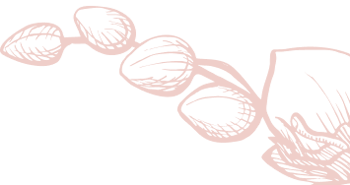
About
Hives / Chronic Hives
Find relief from hives treatment in Lucknow at The Velvet Skin Centre, Indira Nagar. Our expert skin specialist provides safe, effective therapies for chronic skin allergies.
Book Appointment NowCall to book Appointment +91 8002558860

About
Find relief from hives treatment in Lucknow at The Velvet Skin Centre, Indira Nagar. Our expert skin specialist provides safe, effective therapies for chronic skin allergies.
Book Appointment Now
Urticaria, sometimes called hives, is a sudden outbreak of light red lumps or welts on the skin. The swelling that usually goes along with hives is known as angioedema.
Allergies, certain food ingredients, bug stings, sunlight, and medications can all cause hives. It might be challenging to identify the particular cause of hives.

Dr. Asma provides expert care for hives treatment in Lucknow at The Velvet Skin Centre, Indira Nagar. Hives cause red, itchy welts that may appear suddenly due to allergies or chronic conditions. Our treatments combine medications and lifestyle management to control flare-ups effectively. With personalized care, patients achieve lasting relief from discomfort and clearer, healthier skin.
Hives are raised, red patches or bumps on the skin that resemble welts. They are a type of swelling that develops on the surface of the skin and is caused by an allergic reaction. Allergy reactions happen when your immune system comes into contact with an allergen. For the majority of people, allergen proteins are normally benign, but they can cause allergic reactions in those who are more vulnerable.
Intense itching is a common side effect of hives, but you may also feel burning or stinging. They might be as small as a fingertip or as large as a dinner plate. Hives are known as urticaria in medicine.
Sometimes the welts of hives might congregate to create plaques, which are larger areas. Hives frequently fade away in less than 24 hours, despite the fact that they could be visible for several days or more.
An allergic reaction to something you touch or put into your body, such as food, drink, or medicine, is commonly the cause of acute hives. Skin contains mast cells, which are immunological cells. Histamine is one of the chemicals these cells release while they are active. Histamine causes the development of hives.
Hives can also have other extra reasons. A few of causes include having an illness, stress, or physical pressure on your skin. It's common for doctors to be unable to precisely identify the cause of your hives.
Contrary to acute hives, chronic hives are often not caused by allergies. They may be brought on by viral or bacterial infections, lupus, or a combination of these conditions. Your doctor might be unable to pinpoint the exact cause. Chronic hives in these cases are described as spontaneous or idiopathic.
Chronic hives may last for a long, but they usually go away by themselves. They can be uncomfortable even if they are not life-threatening.
Hives-related welts can include:
The majority of hives grow quickly and vanish in a day. The condition is known as acute hives. Chronic hives can last for months or years. p>
Your doctor may use the results of allergy tests to help you pinpoint the causes of acute hives. Knowing your triggers will make it easier for you to avoid them. If you would like:
These suggestions may also be useful for persistent hives.
It may not be possible to prevent chronic hives. Your doctor might not be able to pinpoint their particular cause. They could also be signs of a more serious condition that weakens your immune system.
Your doctor can spot angioedema and hives just by glancing at your skin. Testing for allergies can help identify what is triggering a reaction, however this is particularly true for acute hives. By being aware of the reason, you can avoid allergens and the hives they create. To detect hives, allergy testing entails:
Learn what triggers your hives so you can try to avoid it.
Determine whether it improves or deteriorates in response to heat, cold, pressure, vibration, or other environmental factors. Make a list of every medication you have taken recently, including prescription and over-the-counter medications, dietary supplements, and herbal medicines. You should also be aware of any recent illnesses you may have had, as some conditions (or the drugs used to treat them) may trigger hives.
The doctor will likely take a complete medical history and may also request X-rays, bloodwork, or urine testing.
However, since they are unclear of the aetiology, the majority of hive sufferers require medication.
The most widely used treatments for hives are as follows:
Up to 90% of hive outbreaks go undiagnosed despite extensive testing; this condition is known as idiopathic urticaria. In roughly 50% of cases of idiopathic urticaria, an immune system reaction is most likely what causes hives (autoimmune reaction).
About
About
With multiple skin and hair care clinics across Lucknow, including The Velvet Skin Centre led by Dr. Asma – the best skin doctor in Lucknow and a trusted hair specialist doctor in Lucknow – we make expert dermatological treatments easily accessible, ensuring you receive the best care close to home.
Phone: +91 8002558860
Phone: +91 8002558860
Phone: +91 8002558860

Copyright @ 2025 The Velvet Skin Centre All Rights Reserved